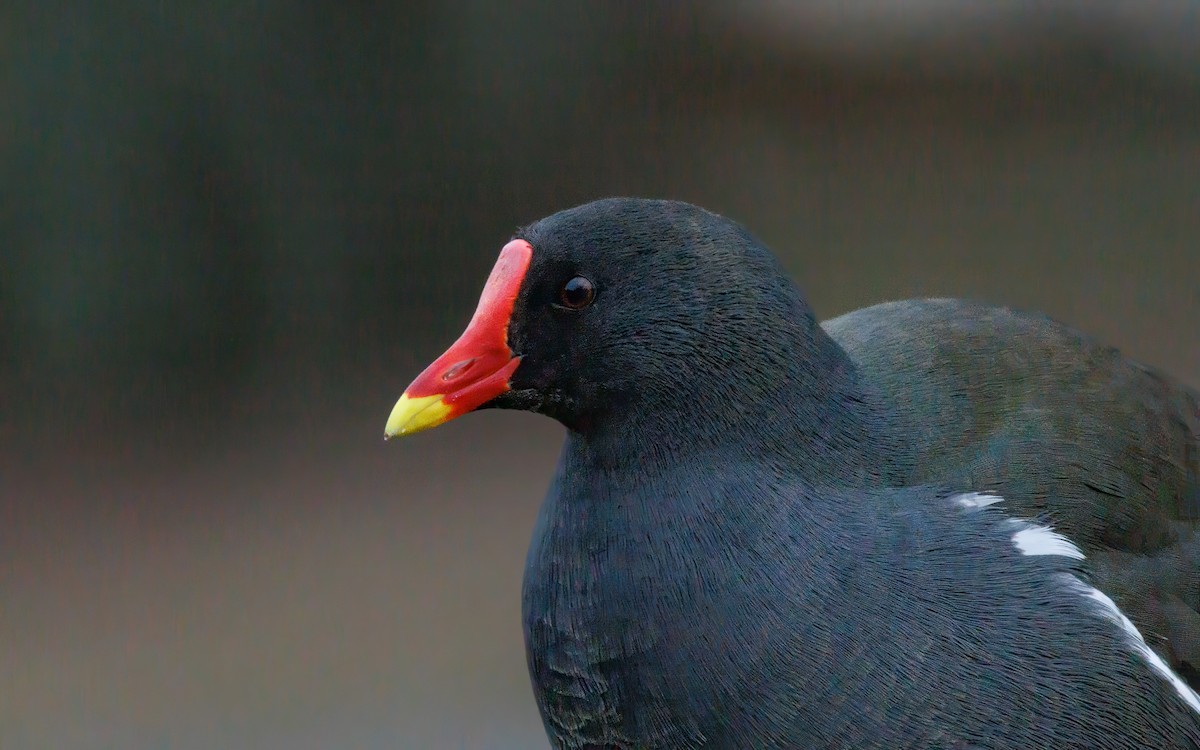Family: Rallidae
Genus: Gallinula
A distinctive dark waterbird with a striking resemblance to a hybrid of a duck and a chicken. Adults sport a vivid red bill tipped with yellow, while juveniles exhibit a more subdued bill and leg coloration. Noteworthy are the large white oval patches beneath the tail and the white streaks running along the flanks. This bird frequents freshwater and brackish marshes, ponds, lakes, and slow-moving waterways adorned with vegetation along the banks. It is smaller and more reserved than the coot, seldom venturing far into open water. Its swimming style is characterized by a jerky motion, while on land, it moves stealthily with a slightly cocked tail; typically avoiding diving. Its vocalizations encompass a range of loud, somewhat frog-like calls.
Photo: Look how gorgeous [myshortcode]
Description [myshortcode]

In Europe, the common moorhen is a familiar sight in reed beds, marshy areas, and along riverbanks. They are also commonly found in urban parks with suitable water bodies. In Africa, these birds can be spotted in a wide range of habitats, including swamps, rivers, and even artificial wetlands. In Asia, the common moorhen is distributed across a variety of wetland habitats, from rice paddies to coastal lagoons.
In the Americas, the common moorhen is found in both North and South America, with populations scattered across the continent. They inhabit freshwater marshes, ponds, and other wetland areas, often coexisting with other species of waterfowl.
Overall, the common moorhen is a highly adaptable bird, capable of thriving in a range of wetland habitats across different continents. Its widespread distribution is a testament to its ability to colonize and inhabit diverse ecosystems, making it a familiar and widespread bird in many parts of the world.




